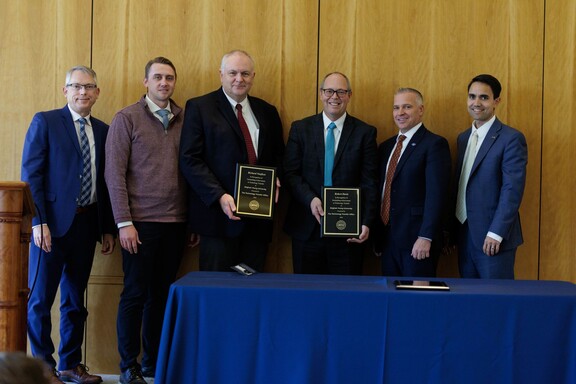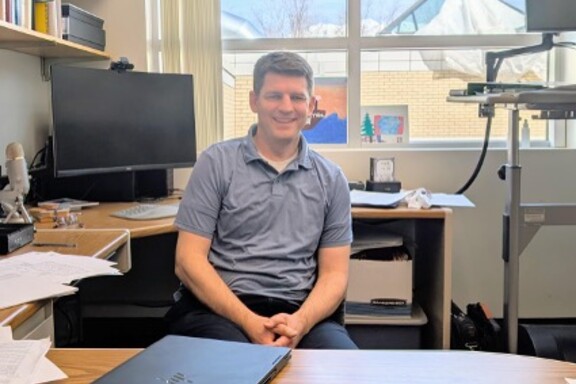News and Events

Acoustic metamaterials have been used to enable exotic wave manipulation including demonstrations of negative refractive index, non-reciprocity, and wave focusing along with many other examples. These exotic functionalities are achieved by designing structures such that sub-wavelength features interact with incident waves to achieve effective material properties. The rise of additive manufacturing (AM) or 3D printing has been crucial to demonstration of metamaterial concepts due AM’s accessibility and its utility in fabrication of complex geometries not producible by other methods. Despite widespread AM use in the acoustics community, specifically in the area of acoustic metamaterials, many of the consolidated materials resulting from AM processes are under-characterized for relevant material properties at length scales of interest. This material characterization problem is complicated by the wide range of printer settings that the user can select when fabricating a printed part. While these user selections are qualitatively understood to result in deviations in printed geometry or variability in material properties, studies which quantify these properties are extremely limited. This talk will provide background on the wave manipulation via acoustic metamaterials and highlight the fabrication challenges encountered due to required complex and multi-scale geometry. Recent efforts will be described which utilized an interlaboratory study to characterize vibration performance of multi-scale geometry built via fused deposition modeling at six institutions.


| Temp: | 33 °F | N2 Boiling: | 76.0 K |
| Humidity: | 85% | H2O Boiling: | 368.6 K |
| Pressure: | 86 kPa | Sunrise: | 7:48 AM |
| Wind: | 2 m/s | Sunset: | 5:20 PM |
| Precip: | 0 mm | Sunlight: | 76 W/m² |


Selected Publications

In the age of commercial spaceflight, many organizations are designing rockets for reuse. Most designs employ some form of propulsive landing either on land or at sea. The foremost among these organizations is Space Exploration Technologies Corporation (SpaceX) with their Falcon-9 rocket. As such rockets return, they produce audible sonic booms over the surrounding areas. The Falcon-9 booster's sonic boom signature is unique, consisting of three primary shocks instead of the two associated with traditional N-waves. This provides an opportunity to study sonic boom formation from a unique geometry and to see whether the triple boom can be physically explained. This paper considers F-function and computational fluid dynamics methods to model the booster's sonic boom under conditions ranging from Mach 1.5 to 2.5. Results support the conclusion of Anderson and Gee (2025) [JASA Express Lett. 5, 023601 (2025)] that the central shock is the result of a rearward-migrating rarefaction wave produced by the lower portions of the booster merging with a forward-migrating compression wave produced by the grid fins. Although it is clear that both the grid fins and the lower portions of the booster contribute to the central shock, the different models disagree on their relative importance in producing the final shock.

Recently a manifestly gauge invariant formalism for calculating amplitudes in quantum electrodynamics was outlined in which the field strength, rather than the gauge potential, is used as the propagating field. To demonstrate the utility of this formalism we calculate the axial and gauge anomalies explicitly in theories with both electrically and magnetically charged particles. Usually the gauge anomaly is identified as an amplitude that (in certain theories) fails to be gauge invariant, so it seems particularly enlightening to understand it in a manifestly gauge invariant formalism. We find that the three photon amplitude is still anomalous in these same theories because it depends explicitly upon the choice of the Stokes surface needed to couple the field strength to sources, so the gauge anomaly arises from geometric considerations.

We present an M87 molecular line search from archival Atacama Large Millimeter/submillimeter Array imaging, covering the circumnuclear disk (CND) as well as ionized gas filaments and dusty cloud regions. We find no evidence for CO emission in the central ∼kiloparsec and place an upper limit of M⊙ in the atomic gas CND region, a factor of 20× lower than previous surveys. During this search, we discovered extragalactic CO absorption lines in the J = 1−0, 2−1, and 3−2 transitions against the bright (jansky-scale) active nucleus. These CO lines are narrow (∼5 km s−1) and blueshifted with respect to the galaxy’s systemic velocity by −75 to −84 km s−1. This CO absorber appears to be kinematically distinct from outflowing atomic gas seen in absorption. Low integrated opacities ranging from τCO ∼ 0.02−0.06 km s−1 and a column density NCO ≈ (1.2 ± 0.2) × 1015 cm−2 translate to cm−2. CO excitation temperatures spanning Tex ∼ 8–30 K do not follow local thermodynamic equilibrium (LTE) expectations, and non-LTE radex radiative transfer modeling of the CO absorber is consistent with a number density cm−3 embedded in a ∼60 K environment. Taken together, the observed CO absorption lines are most consistent with a thin, pressure-confined filament seen slightly off-center from the M87 nucleus. We also explore the impact of residual telluric lines and atmospheric variability on narrow extragalactic line identification and demonstrate how bandpass calibration limitations may introduce broad but very low signal-to-noise ratio and spurious absorption and emission signatures.

Extreme-ultraviolet light has become more important for advancements in modern computer chip manufacturing, and as such, there needs to be more access to extreme-ultraviolet sources for observing properties of novel technology materials. Some of these extreme-ultraviolet sources need to have the ability to tune the polarization for observing dichroic properties of materials such as magnetism. We present a compact extreme-ultraviolet tabletop source, based on high harmonic generation, designed for use in polarization-sensitive imaging. The source is able to generate circularly polarized harmonics using the MAch-ZEhnder-Less for Threefold Optical Virginia spiderwort apparatus. The linearly polarized 42 and 52 eV beams have been optimized, achieving an average power of 19.4 and 8.0 nW, respectively. Using the 42 eV linearly polarized beam for ptychography, we have imaged a Siemens star test resolution target and obtained a resolution of 160 nm.

Background
Response curves are widely used in biomedical literature to summarize time-dependent outcomes, yet raw data are not always available in published reports. Meta-analysts must frequently extract means and standard errors from figures and estimate outcome measures like the area under the curve (AUC) without access to participant-level data. No standardized method exists for calculating AUC or propagating error under these constraints.
Methods
We evaluate two methods for estimating AUC from figure-derived data: (1) a trapezoidal integration approach with extrema variance propagation, and (2) a Monte Carlo method that samples plausible response curves and integrates over their posterior distribution. We generated 3,920 synthetic datasets from seven functional response types commonly found in glycemic response and pharmacokinetic research, varying the number of timepoints (4–10) and participants (5–40). All response curves were normalized to a true AUC of 1.0.
Results
The standard method consistently underestimated the true AUC, especially in curves with skewed or long-tailed structures. Monte Carlo method produced near-unbiased estimates with tighter alignment to the known AUC across all settings. Increasing the number of datapoints and participants improved performance for both methods, but the Monte Carlo approach retained robustness even under sparse conditions.
Conclusion
This is the first large-scale benchmarking of AUC estimation accuracy from graphically extracted data. The Monte Carlo method outperforms standard approaches in both accuracy and uncertainty quantification. We recommend its adoption in meta-analytic contexts where only figure-derived data are available and advocate for improved data sharing practices in primary publications.

Recent breakthroughs in nuclear fusion, specifically the report of reactions exceeding scientific breakeven at the National Ignition Facility (NIF), highlight the potential of inertial fusion energy (IFE) as a sustainable and virtually limitless energy source. However, further progress in IFE requires characterization of defects in ablator materials and how they affect fuel capsule compression. Voids within the ablator can degrade energy yield, but their impact on the density distribution has primarily been studied through simulations, with limited high-resolution experimental validation. To address this, we used the x-ray free-electron laser (XFEL) at the matter in extreme conditions (MECs) instrument at the Linac coherent light source (LCLS) to capture 2D x-ray phase-contrast (XPC) images of a void-bearing sample with a composition similar to inertial confinement fusion (ICF) ablators. By driving a compressive shockwave through the sample using MEC's long-pulse laser system, we analyzed how voids influence shockwave propagation and density distribution during compression. To quantify this impact, we extracted phase information using two phase retrieval algorithms. First, we applied the contrast transfer function (CTF) method, paired with Tikhonov regularization and a fast optimization approach to generate an initial phase estimate. We then refined the result using a projected gradient descent (PGD) method that works directly with the sample's refractive index. Comparing these results with radiation adaptive grid Eulerian (xRAGE) radiation hydrodynamic simulations enables identification of model validation needs or improvements. By calculating phase maps in situ, it becomes possible to reconstruct areal density maps, improving understanding of laser-capsule interactions and advancing IFE research.
